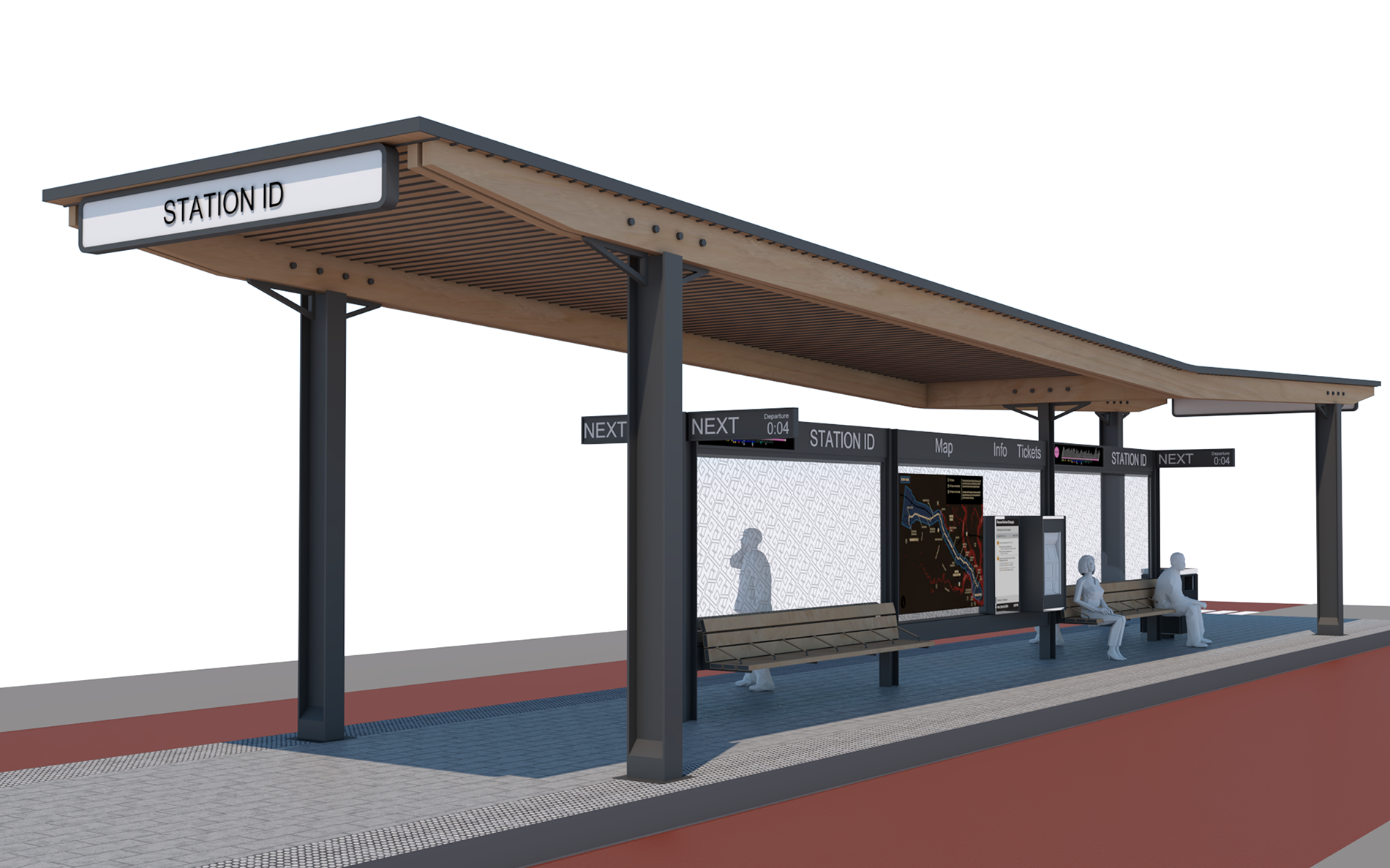ABOUT THE PROJECT
A NETWORK OF POSSIBILITIES
Lowcountry Rapid Transit will provide residents with dependable, frequent transportation and greater access to opportunities throughout the region. Connections between communities and employment centers will be enhanced and will also accommodate other modes such as biking and walking in some areas that are among the state’s most dangerous to do so today.
- South Carolina’s first high capacity mass transit project
- New connections to businesses, healthcare, recreation and entertainment across the region
- Growth in employment clusters, affordable housing
HIGH-FREQUENCY AND IMPROVED MOBILITY
With the LCRT system, new stations will be added along the corridor to provide more options for riders with access to key areas like employment hubs, recreation, schools, tourism and other community resources. These stations will include improved designs to offer greater protection, safety and comfort to communities that would complement the aesthetics of the area. Bike racks, benches and awnings are just a few of the included bus and station amenities to accommodate bicyclists and pedestrians to encourage the use of and provide a seamless flow for alternate methods of transportation.
- Improved reliability through dedicated lanes
- Faster travel times for commuters
- Safer, more comfortable transportation environments with ADA compliance
ADVANCED TECHNOLOGY
The system will utilize advanced technology to make travel more reliable and prepare the region for the future of transit by supporting autonomous vehicles and other innovations. Updated signage and lighting have the ability to make your commutes safer. Efforts will be made to expand transit access to all residents and commuters through uses of new technology, including kiosks, mobile technology and more.
- Stoplight signal priority and synchronization
- WiFi on board and at stations, with innovations to support autonomous vehicless
- Updated wayfinding signage and corridor lighting
ENVIRONMENTAL STEWARDSHIP
LCRT isn’t just a benefit for commuters, but also one for the environment by including vehicles that reduce emissions by relying on alternative fuels and electricity to power buses. This would lead to cleaner air and waterways and, as a result, stronger communities.
- Affordable transportation alternative
- Clean, alternative fuels or electricity
- Sustainability-forward stations that fit within the confines of the community
CONNECTED COMMUNITIES
By incorporating sidewalks, bus lanes and safe pedestrian crossways, LCRT will promote an increased connectivity between communities to bolster opportunities for residents and businesses through access to affordable housing and employment. Communities currently divided by highways and distance can rebuild connections and bolster new bonds.
- Equitable access to community resources and affordable housing
- Enhanced bicycle and pedestrian accommodations and connections to existing networks
- Strong place making elements that reflect the culture, character and natural features of existing neighborhoods
OVERVIEW
Lowcountry Rapid Transit is a bus rapid transit system that connects, downtown Charleston, North Charleston and Summerville. More than just a transit system, this project will transform the infrastructure in our region to improve mobility for people on public transportation, in cars, on foot and on bikes, and will be a catalyst for economic growth and prosperity throughout the area.
PROJECT HISTORY
In response to rapid growth in the Lowcountry’s population and economy, BCDCOG commissioned the i-26ALT study, a 15-month analysis to identify a viable fixed guideway transit solution to reduce traffic congestion and improve mobility in the region. The i-26ALT study concluded that a bus rapid transit system along the US Highway 78 and US Highway 52 Corridor, running parallel to I-26, was the preferred transit alternative to move forward into project development. As the tri-county planning agency responsible for regional transportation and transit projects, BCDCOG is leading this project.
An early study found that estimated costs for the project are $360 million. In November 2016, Charleston County voters passed a half-cent sales tax to fund transit projects. Part of that funding will be used to apply for matching federal grants. Once in operation the project will have an estimated annual operating cost of $5.9 million. Project costs will further analyzed as the projects progresses.
The project will examine and adopt a locally preferred alignment for bus rapid transit from downtown Charleston to Summerville by conducting detailed environmental studies, completing conceptual engineering design work, evaluating alternatives for station and terminal start and end-point locations, and soliciting input from regional stakeholders, the local community, general public, and public agencies.
HOW DOES BRT WORK?
Bus rapid transit (BRT) is a high-quality transit system that delivers fast, comfortable, and cost-effective services, operating predominately in dedicated lanes throughout key areas of the corridor, keeping cars and the transit system separate. Technology such as off-board payment and stoplight priority allow travel times to be consistent and reliable. In addition, vehicles will be powered by alternative fuels or electricity, helping to promote sustainability.

Recommended Route and Station Locations
PROJECT SCHEDULE
The anticipated project completion date is 2026.
Local Planning - 2014-2016
- Pre-Project Development
- Comprehensive Operational Analysis
- Alternatives Analysis
- FTA Guidelines/Travel Demand Forecasting
- Public Engagement
Project Programming - 2016-2019
- Bus Rapid Transit Preferred Alternative Identified
- Half-cent sales tax referendum passed in Charleston County (2016)
- Agency Coordination
- Informal Scoping & NEPA Checklist
- Identify Funding & Schedule (LRTP)
- Existing Conditions Evaluation & Conceptual Design (10%)
- NEPA Class of Action & Initiate NEPA Scoping
- Request Entry into Project Development
Capital Investment Grant Program - 2019-2021
- Project Development
- Complete NEPA
- Adopt a Locally Preferred Alternative
- Complete 30% Design
- Must Receive Medium Rating for Project Justification & Financial Commitment Criteria
- Engineering
- Significant Progress with Engineering
- Recommended for Construction Grant Agreement
- Construction - 2023-2026
Project timeline is estimated under the New Starts Capital Investment Grant program guidelines.



